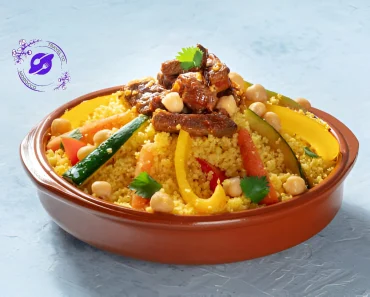Discover Local Food Gems: 1 A Guide to Culinary Diversity Near You
Discover Local Food Gems: 1 A Guide to Culinary Diversity Near You
Top 5 Unmissable Food Near Me: A Local Guide

Moroccan Cuisine
“Explore diverse local food spots with this comprehensive guide. Learn about sustainability, culture, and future trends in the culinary world.”
Exploring local food options can be an exciting journey, offering a variety of methods including online resources, local recommendations, and food tours [1]. By searching for ‘food near me’, you open up a world of culinary diversity and unique flavors right at your doorstep.
This article will guide you through the top 5 unmissable food spots near you, delving into the diversity of food sources, the cultural significance behind what we eat, innovative food trends, sustainable practices, and the future challenges and innovations in the food industry. Whether you’re a food enthusiast or simply looking for your next meal, this local guide will serve as your compass to the best food experiences near you.
Exploring the Diversity of Food Sources
Exploring the diversity of food sources brings to light various innovative and sustainable practices that are reshaping our culinary experiences. Here’s a look at some key trends:
1. Sustainable and Nutritious Choices:
o Edible Insects: Gaining acceptance as a sustainable protein source.
o Plant-Based Innovations: Chefs are expanding the use of plant-based ingredients, enhancing culinary creativity.
o Local and Foraged: Increasing popularity for fresh, seasonal produce sourced locally.
2. Cultural and Dietary Considerations:
Tailoring food offerings to meet the cultural preferences and dietary needs of diverse communities is crucial. This involves:
Providing a variety of fresh fruits, vegetables, meats, and seafood.
Considering cultural preferences for specific communities, ensuring the inclusion of traditional heritage diets.
Offering staple ingredients like rice, beans, herbs, spices, and cooking oils.
3. Community Engagement and Learning:
Food Education and Sharing: Platforms like the USDA Blog offer insights into traditional eating patterns and healthy cooking tips across various cultures.
Interactive Experiences: Engaging the community through cooking classes, food tours, and cultural experiences helps in exploring global cuisines and promotes a deeper understanding of food sources.
These practices not only enrich our palates but also contribute to a more sustainable and inclusive food culture.
The Cultural Significance of Food
Exploring the cultural significance of food reveals its profound impact on society and personal identity. Here are some key aspects:
1. Cultural Heritage and Identity:
o Food is recognized by UNESCO as part of the intangible cultural heritage, encompassing traditional recipes, cooking techniques, and dining etiquette.
o It expresses cultural identity, with traditional dishes and cooking techniques reflecting pride and heritage.
2. Social and Economic Roles:
o Food brings people together, fostering opportunities for connection and bonding, and plays a significant role in rituals and ceremonies.
o It has economic significance, especially in regions where agriculture and food production are major industries.
3. Preservation and Education:
o Documenting local food processes and histories is vital for preserving the methods and qualities of local food for future generations.
o Educational platforms and movements like the Slow Food movement emphasize the importance of enjoying traditional, locally sourced food and encourage social interactions around meals.
By understanding the multifaceted roles of food in cultural identity, social bonding, and economic activities, you can appreciate the depth of its influence on our lives and communities.
Innovative Food Trends and Sustainable Practices
Innovative food trends and sustainable practices are reshaping the culinary world, focusing on environmental stewardship and health benefits. Here are some pivotal trends:
1. Urban Farming Initiatives:
Urban centers are transforming with the introduction of rooftop gardens, community plots, and indoor vertical farms, making fresh produce more accessible in urban areas.
2. Farm-to-Table and Food Halls:
Restaurants and indoor markets prioritize ingredients sourced from local farms, ensuring freshness and reducing carbon footprints. This approach supports local economies and promotes sustainable agriculture.
3. Sustainable Seafood and Meat Alternatives:
With a growing awareness of overfishing and environmental impacts of traditional meat production, there is a noticeable shift towards sustainable seafood and plant-based proteins. This trend not only helps in conserving biodiversity but also addresses health concerns related to conventional meat consumption.
Each of these practices not only contributes to a healthier planet but also enhances the nutritional quality of our diets, fostering a more sustainable and responsible food culture.
The Future of Food: Challenges and Innovations
As we look towards the future, the challenges and innovations in food production are pivotal in meeting global needs. Here are some key areas of focus:
1. Increased Food Production and Sustainability:
o By 2050, global food production needs to increase by 70% to cater to the growing population, with current hunger affecting 800 million people.
o Innovations like big data and AI are enhancing farm resource efficiency, crucial for producing more food with fewer resources.
o Imagery-based analytics are helping optimize water use and fertilizer application, significantly reducing resource wastage.
2. Advanced Agricultural Technologies:
o The adoption of digital technologies and connectivity is transforming agriculture, with data analytics predicted to grow at a rate of over 12% annually.
o AI technologies are becoming indispensable in predicting and mitigating crop diseases, securing yields before losses occur.
o The entire agriculture supply chain is anticipated to undergo massive changes, improving resource-use efficiency at the farm level.
3. Traceability and Consumer Engagement:
o Transparency in food production is increasingly demanded by consumers, who are keen on understanding the origins and processes involved in food production .
o Investments in food traceability are projected to reach $31.7 billion by 2028, highlighting its growing importance in ensuring food safety and ethical production.
o Technologies like blockchain and smart labels are revolutionizing this sector, boosting food safety standards and consumer confidence.
These advancements not only promise to address the immediate challenges of food production but also ensure long-term sustainability and consumer trust in the food supply chain.
Conclusion
Through the exploration of unmissable local food spots, we have traversed a landscape rich in diversity, cultural significance, innovative trends, and sustainable practices that collectively underscore the profound impact of food on our communities, identities, and the environment. The journey illuminated the importance of sourcing diverse and sustainable food options that not only tease our palates but also contribute to a healthier planet and a more inclusive society. This guide serves as a testament to the vibrant, ever-evolving culinary scene that beckons food enthusiasts to revel in the richness of local offerings and the promise of future gastronomic delights.
As we anticipate the future of food, marked by challenges and innovations, it is imperative to recognize the role each of us plays in promoting sustainable practices, cultural preservation, and technological advancements in food production. The implications of our food choices stretch far beyond our immediate environment, influencing global food sustainability, cultural heritage, and economic stability. Let this exploration serve as an invitation to further engage with the local food ecosystem, contribute positively to its sustainability, and partake in the rich, cultural tapestry that food weaves into the fabric of our lives.






